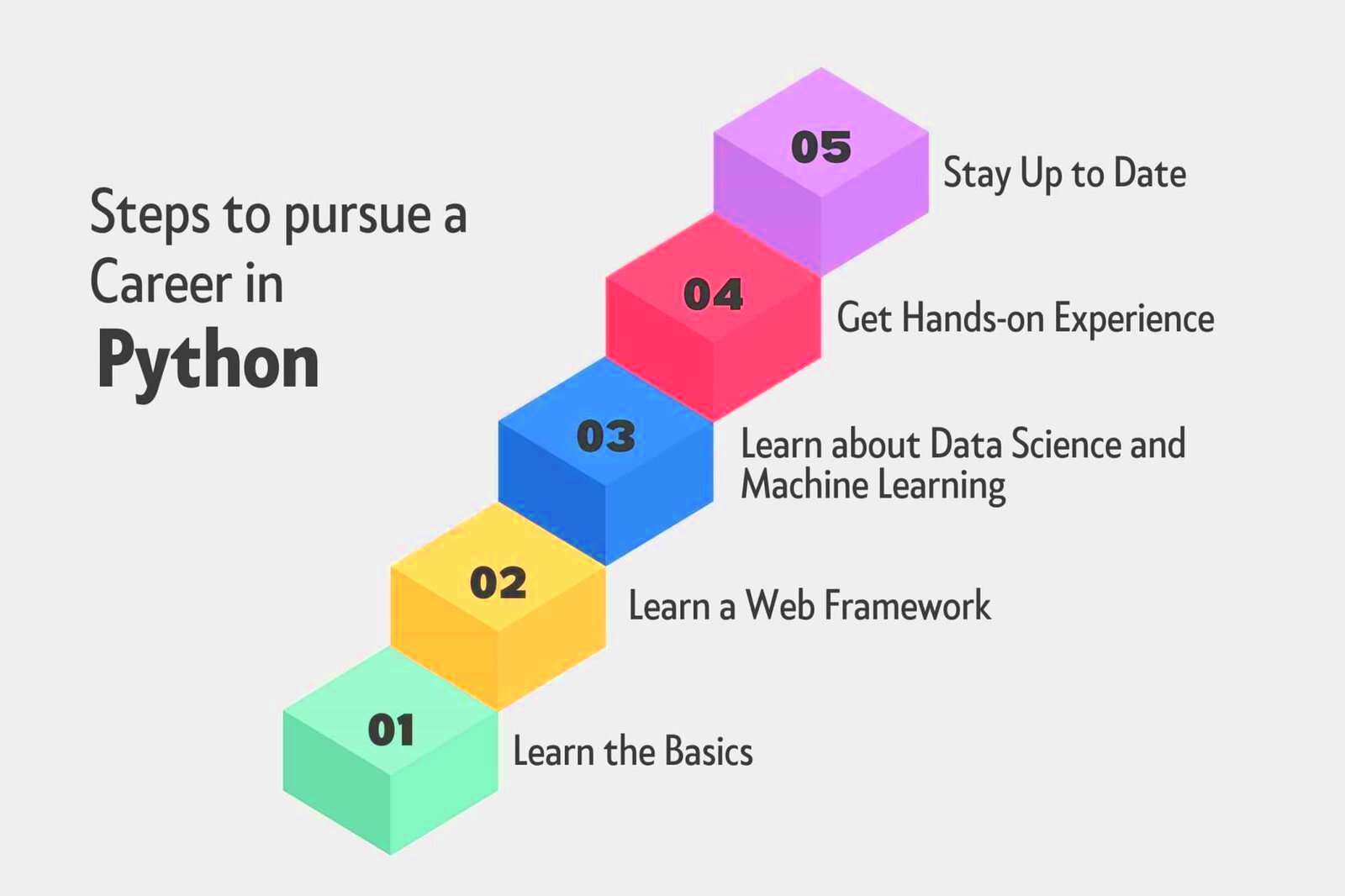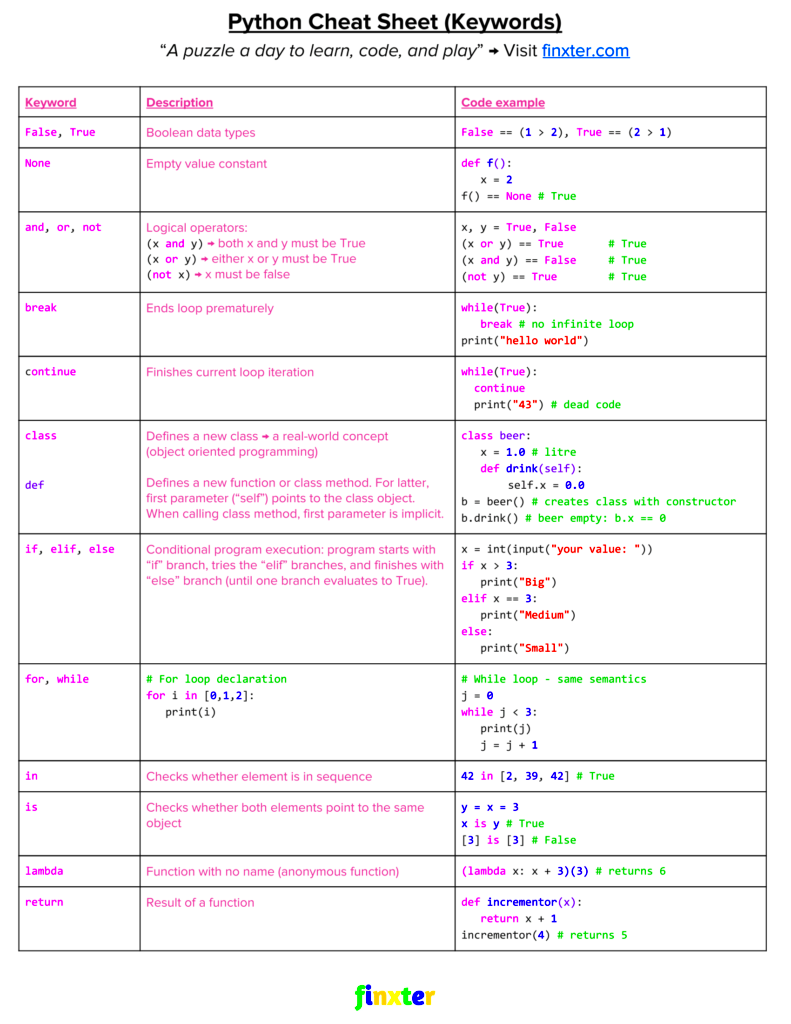Python freelancing is a fantastic career choice for developers looking to work independently while doing what they love. With its broad range of applications—from web development to data analysis—Python has become a top choice for freelance professionals. If you're someone who enjoys problem-solving and writing clean code, starting a career as a Python freelancer might be the perfect opportunity for you. In this guide, we’ll cover the steps you need to take to launch your career, from gaining the necessary skills to landing your first freelance gig.
Understanding the Basics of Python and Freelancing

Before diving into freelancing, it’s essential to understand what Python is and how freelancing works. Python is a versatile programming language used for web development, machine learning, data analysis, automation, and more. As a Python freelancer, you’ll need to be familiar with different Python libraries and frameworks to handle various projects. Freelancing, on the other hand, means working independently, often with multiple clients, rather than being employed by a single company.
Here are a few basic things to keep in mind when starting as a Python freelancer:
- Python skills: Ensure you have a solid grasp of Python fundamentals, libraries, and frameworks like Flask, Django, NumPy, and Pandas.
- Freelance platform knowledge: Familiarize yourself with popular freelance platforms like Fiverr, Upwork, and Freelancer.com to find clients.
- Self-management: Freelancing requires self-discipline and effective time management. You’ll need to balance multiple projects and deadlines.
Also Read This: Are Fiverr Artists Real or Just a Mirage?
Choosing the Right Python Skills to Offer

Python is a versatile language, and as a freelancer, it’s important to choose the right skills to offer clients. While some Python projects may require a deep understanding of machine learning, others may focus more on web development or automation tasks. Here’s a breakdown of some of the key Python skills that are in high demand:
- Web Development: Python’s frameworks, like Django and Flask, are excellent for building web applications. If you’re interested in web development, mastering these frameworks will be crucial.
- Data Science and Analytics: Python is widely used in data analysis, especially with libraries like Pandas, NumPy, and Matplotlib. Knowledge of these libraries is important for anyone looking to offer data-related services.
- Machine Learning: If you’re interested in artificial intelligence, Python is the go-to language for machine learning projects. Skills in libraries like TensorFlow and Scikit-Learn are highly sought after.
- Automation and Scripting: Python excels in automation and writing scripts for repetitive tasks. If you enjoy simplifying processes, offering automation services is a great option.
- Game Development: Though not as popular as other fields, Python can also be used for building games. If this is an area of interest for you, tools like Pygame can help bring your ideas to life.
Ultimately, you should focus on the skills that match your interests and the demand in the freelance market. Choose a niche, specialize in it, and develop a portfolio that showcases your abilities.
Also Read This: How to Work on URL Fiverr
Building a Strong Python Portfolio

A strong portfolio is one of the most important assets for any Python freelancer. It serves as proof of your skills and abilities to potential clients. Your portfolio should showcase your best work, highlight a variety of Python-related projects, and demonstrate your problem-solving capabilities. The more relevant your portfolio is to the type of projects you're aiming for, the better your chances of landing high-quality freelance work.
Here’s how you can build a strong portfolio:
- Include a variety of projects: Show your versatility by including projects across different Python domains, such as web development, data science, automation, and more. This will attract a wider range of clients.
- Show real-world applications: Instead of just posting simple scripts, focus on projects that solve real-world problems. If you have a web app, showcase how it’s used. If it’s a data analysis project, explain the insights it provides.
- Write clear documentation: Make sure each project in your portfolio is well-documented. This includes clean code, clear instructions, and details on how your solution works. Good documentation shows professionalism and makes it easier for clients to understand your work.
- Use GitHub: Host your code on GitHub or other code-sharing platforms. This is a great way to show that you not only know how to code but also understand version control and collaboration.
- Get testimonials: If you’ve already completed freelance work or personal projects for others, ask for feedback. Positive testimonials and reviews can enhance your credibility and make your portfolio more attractive.
Remember, your portfolio is a reflection of you. Keep it updated and relevant to the kinds of freelance projects you want to pursue.
Also Read This: Earnings of Freelance Artists
Finding Freelance Opportunities in Python

Finding freelance opportunities as a Python developer can be a challenge, especially when you're just starting out. However, there are many platforms and strategies to help you land your first few gigs. Below are some popular ways to find Python freelance work:
- Freelance Platforms: Websites like Fiverr, Upwork, Freelancer, and Toptal are great places to start. You can browse job listings, bid on projects, and build your client base.
- Networking: Leverage your network to find freelance opportunities. Inform friends, family, and professional connections about your freelancing services. Word of mouth can lead to great job referrals.
- Online Communities: Platforms like Reddit, Stack Overflow, and GitHub offer communities where developers often share freelance opportunities. Engage with these communities by answering questions or showcasing your projects.
- Job Boards: Several job boards, such as We Work Remotely and Remote OK, feature Python freelance gigs. These boards are a great way to find ongoing and one-time project-based work.
- Social Media: Twitter and LinkedIn are good for reaching out to potential clients. Follow relevant hashtags and interact with potential employers to build your online presence.
- Cold Outreach: Don’t hesitate to contact potential clients directly. Look for companies or individuals who could benefit from your Python skills and pitch your services in a concise, professional manner.
By exploring these different avenues, you'll increase your chances of finding quality freelance work and building a steady stream of clients.
Also Read This: How to Get a Data Entry Job on Fiverr
Setting Competitive Rates for Python Freelance Work
When starting out as a Python freelancer, setting the right rate for your services can be tricky. You want to be competitive without undervaluing your skills. Here’s a step-by-step guide to help you set competitive rates:
- Research the market: Look at what other Python freelancers are charging. Platforms like Upwork or Fiverr can give you a sense of the average rates for different types of projects. Rates may vary depending on factors like experience, complexity, and location.
- Factor in your experience: If you’re just starting out, you might need to charge lower rates initially to attract clients. However, as you gain experience and build a portfolio, you can gradually increase your rates.
- Consider your niche: If you specialize in a high-demand area, like machine learning or data science, you can charge more for your services. Niche skills often command higher rates due to their complexity and demand.
- Hourly vs. Fixed Rates: Decide whether to charge by the hour or by the project. Hourly rates work well for ongoing tasks or work with unclear project scope, while fixed rates are better for well-defined projects.
- Don’t undervalue yourself: It’s tempting to charge lower rates to attract clients, but doing so can lead to burnout and undervaluing your skills. Start at a fair rate that reflects the quality you offer, and adjust as needed.
- Account for overhead: As a freelancer, you’ll need to cover your own taxes, software, equipment, and other expenses. Make sure to factor this into your rate to avoid losing money in the long run.
| Experience Level | Hourly Rate | Fixed Rate (for typical project) |
|---|---|---|
| Beginner (0-2 years) | $15 - $30 | $100 - $500 |
| Intermediate (2-5 years) | $30 - $50 | $500 - $1,500 |
| Advanced (5+ years) | $50 - $100+ | $1,500+ |
By setting competitive and fair rates, you'll ensure you’re compensated for your skills while remaining attractive to potential clients.
Also Read This: Can More Than One Person Collaborate on Fiverr?
Building Client Relationships and Maintaining Projects
Building strong relationships with your clients is crucial for long-term success in Python freelancing. A satisfied client is more likely to return for future projects, provide positive referrals, and trust you with more complex tasks. To maintain good relationships and ensure successful project completion, focus on communication, reliability, and delivering quality work. Let’s break down some strategies for keeping clients happy and ensuring smooth project management:
- Clear Communication: Always maintain open and clear communication with your clients. Discuss project goals, timelines, and expectations upfront. Regular updates and quick responses to emails or messages will build trust and prevent misunderstandings.
- Set Realistic Deadlines: Avoid overpromising. Be honest about how much time you need to complete a project. It’s better to deliver on time or early than disappoint the client by missing a deadline.
- Quality Over Quantity: Focus on delivering high-quality work that meets the client’s expectations. Even if a project is small, make sure it is done well and reflects your skills and attention to detail.
- Be Open to Feedback: Don’t take client feedback personally. Be open to making changes or revisions to meet their needs. This shows professionalism and a commitment to customer satisfaction.
- Long-Term Relationships: After completing a project, follow up with your client. Ask if they need any additional services or if they’re interested in a new project. This helps maintain an ongoing relationship and can lead to more work in the future.
Good client relationships are the backbone of a successful freelance career. With the right attitude and work ethic, you can build a strong client base and keep projects running smoothly.
Also Read This: How to Cancel an Order on Fiverr
Common Challenges in Python Freelancing and How to Overcome Them
Freelancing comes with its share of challenges, especially in a technical field like Python programming. Whether you’re dealing with difficult clients or struggling to find consistent work, these hurdles can sometimes feel overwhelming. However, with the right approach, these challenges are manageable. Below are some common issues faced by Python freelancers and tips on how to overcome them:
- Finding Clients: One of the biggest challenges when starting out is finding enough clients to maintain a steady income. To overcome this, consider joining freelance platforms, networking, and leveraging social media to increase your visibility. Building a strong portfolio and asking for referrals from satisfied clients can also help attract more work.
- Setting and Negotiating Rates: It can be tricky to know what to charge for your services, especially when starting. To tackle this, research industry rates for Python freelancers, consider your experience level, and adjust as needed. Be confident in your rates and don't be afraid to negotiate with clients.
- Managing Multiple Projects: Juggling multiple clients or projects can be overwhelming. Use tools like Trello, Asana, or even simple calendars to stay organized. Set clear deadlines for yourself and your clients, and keep them updated regularly on progress.
- Dealing with Difficult Clients: Sometimes clients can be demanding or uncommunicative, making the project harder to manage. If you face a difficult client, try to keep communication professional and calm. Establish clear expectations early on and don’t be afraid to set boundaries if needed.
- Staying Motivated: Freelancing often means working alone, which can be isolating. To maintain motivation, set regular goals, create a routine, and connect with other freelancers. Online communities can be a great place for support and advice.
By staying proactive, organized, and open to learning, you can tackle these challenges and thrive as a Python freelancer. Every obstacle can be an opportunity for growth and improvement.
Also Read This: Is Fiverr Good for Creating D&D Characters?
Frequently Asked Questions
As a Python freelancer, you may have a lot of questions about the industry and how to succeed in your career. Below are answers to some frequently asked questions that can help guide you on your journey:
- What skills do I need to be a Python freelancer? To become a successful Python freelancer, you should be proficient in Python itself, along with relevant libraries and frameworks like Django, Flask, Pandas, and NumPy. Strong problem-solving skills and the ability to work independently are also important.
- How do I find my first freelance job? To find your first freelance job, start by building a portfolio, networking with potential clients, and signing up on freelance platforms like Fiverr or Upwork. Don’t hesitate to start small and build your reputation over time.
- Should I work with a contract? Yes, always use a contract for your freelance projects. A contract protects both you and the client by clearly defining project expectations, deadlines, payment terms, and other important details. It helps avoid misunderstandings later on.
- How do I set my rates? Research industry standards for Python freelancers to determine what to charge. Consider your experience, skillset, and the type of project. You can charge either hourly or per project, but ensure your rates reflect the value you offer.
- Can I do Python freelancing part-time? Yes, Python freelancing can be done part-time. Many freelancers start part-time while maintaining a regular job. Over time, you can transition to full-time freelancing as you gain more clients and experience.
- How do I handle revisions and feedback? Be professional and open to client feedback. If a client requests revisions, handle them calmly and make the necessary changes. Set clear revision limits in your contract to avoid excessive work beyond the original scope.
Freelancing can be a rewarding and flexible career choice, but it requires effort, patience, and continual learning. By being proactive, organized, and responsive, you can enjoy a successful career as a Python freelancer.
Conclusion: Key Takeaways for Starting a Successful Python Freelance Career
Starting a career as a Python freelancer can be both rewarding and challenging. By focusing on building your skills, creating a strong portfolio, and effectively marketing yourself, you can attract clients and establish a steady stream of projects. Remember, success in freelancing doesn’t happen overnight, but with persistence and dedication, you can build a fulfilling and sustainable career. Key takeaways include:
- Sharpen your skills: Stay up-to-date with Python libraries, frameworks, and tools that are in demand. Specializing in a niche can help you stand out in a competitive market.
- Create a compelling portfolio: Showcase a variety of well-documented Python projects that demonstrate your expertise. Real-world applications will impress potential clients.
- Network and find clients: Use freelance platforms, online communities, and networking to find work. Don’t hesitate to reach out to potential clients directly.
- Set fair rates: Research industry rates and set pricing that reflects your experience and the quality of your work. Be confident in your value as a Python freelancer.
- Build long-term relationships: Good client relationships are essential for repeat business and referrals. Always aim to deliver high-quality work on time and maintain clear communication.
With the right approach, you can successfully navigate the world of Python freelancing. Stay focused, keep learning, and always strive to exceed client expectations.




